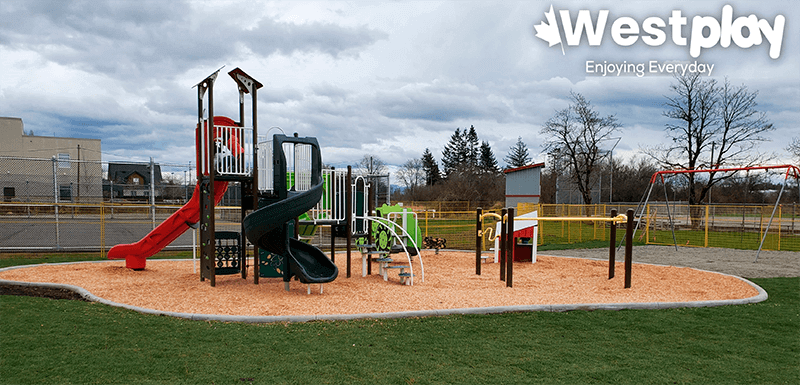Implementing a playground in a school can be an exciting and beneficial project for students, but it can also raise some concerns for parents and school representatives. In the previous article, we discussed some myths about the implementation of playgrounds in daycare and the realities behind them; this time, we will dismantle some common misconceptions that may arise when implementing a playground in a school and offer some practical solutions to address them.
A playground in a school is a luxury that only private schools can afford
The belief that a playground is a luxury that only private schools can afford is a myth that needs to be dismantled, as playgrounds are, in fact, an essential part of children’s right to have access to safe and healthy spaces to play and learn. Currently, there are a wide variety of options when designing a playground that adapts to the needs of each client in terms of resources, time, and space. Also, local funding and resources may help implement community projects depending on the locality. Many non-profit organizations and local governments offer grants and funding programs to create playgrounds in public schools. In addition, schools can seek community collaboration and organize events to raise funds.
Playgrounds are dangerous and can cause injury to children
Concern for children’s safety is understandable, but it does not mean playgrounds are inherently dangerous. By designing and implementing safe and appropriate playgrounds, the risks of injury are minimized by using high-quality materials and following established safety standards, selecting proper equipment for users, and taking into account protective elements such as rubber surfaces, shades, highly resistant ropes, special anchors and other elements that guarantee the integrity of children.

Playgrounds are a waste of space and are not correctly used
This myth may stem from the belief that children do not use playgrounds correctly and that the space could be used more productively. However, playgrounds are essential for children’s physical and emotional development. For them, playgrounds can be designed to be versatile and multifunctional, not only as a play space but also as a space that can be used for educational and community activities.
Playgrounds are complex and require a lot of maintenance
Thinking that a playground must be rigorously maintained is understandable, but it does not mean it is impossible. Most traditional playgrounds today are made of materials that are easy to clean and are built to withstand weather and climate changes, In addition to having a maintenance schedule. This does not mean that regular cleaning or equipment maintenance is not necessary to prolong the life of the playground; it just makes the process easier. In addition, involving students and the community in playground maintenance can help create a sense of responsibility and ownership.
Playgrounds are not suitable for children of all ages
Although playgrounds are specific to certain age ranges due to the size of the equipment, the belief that playgrounds are only suitable for children of certain ages is a myth since inclusive playgrounds can create play spaces where children of different ages, skills, and abilities can play safely.
What did you think of this topic? Do you want to know more about playgrounds for schools?
If you want a playground for your school, contact us by visiting the following link.
